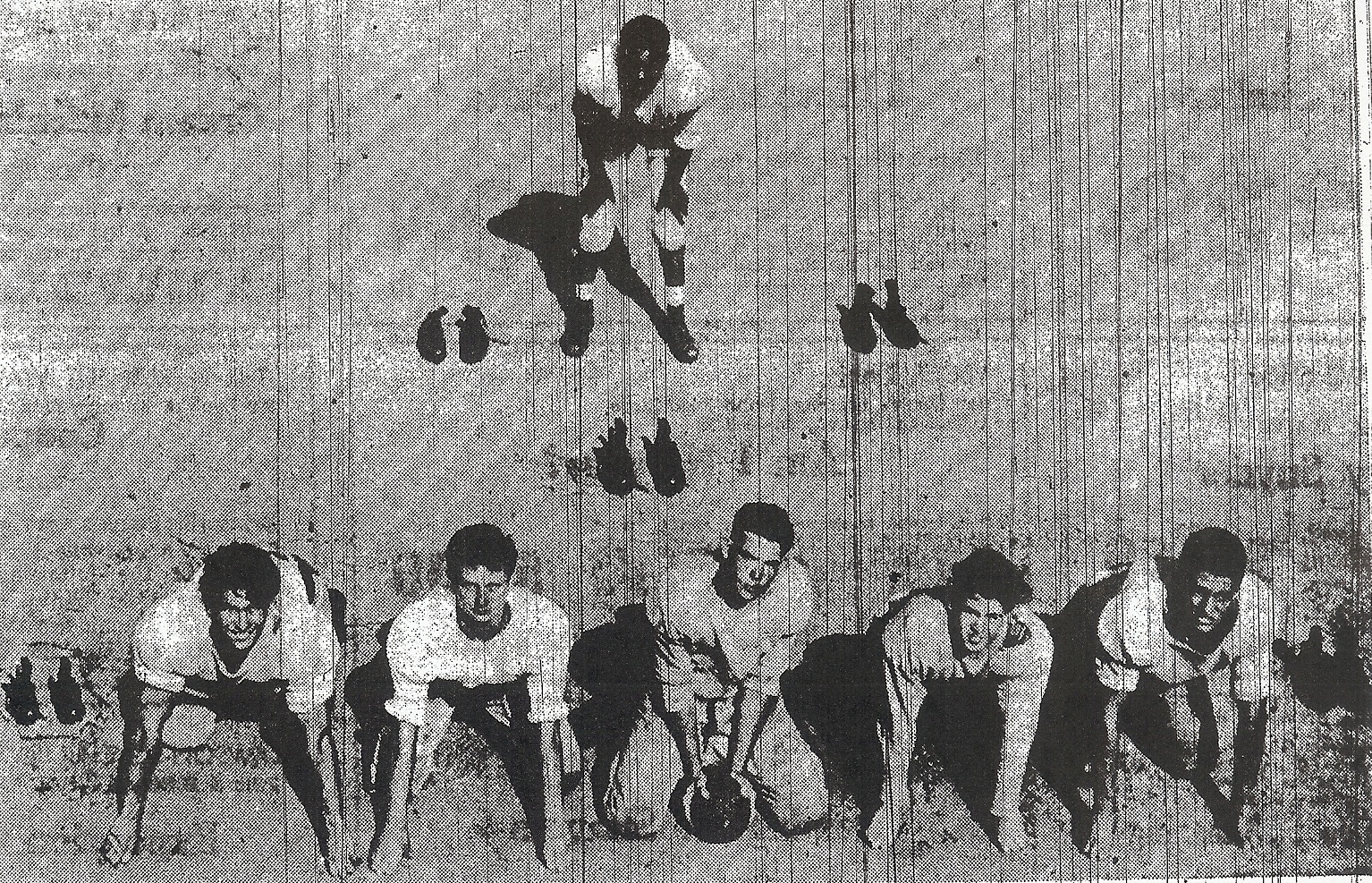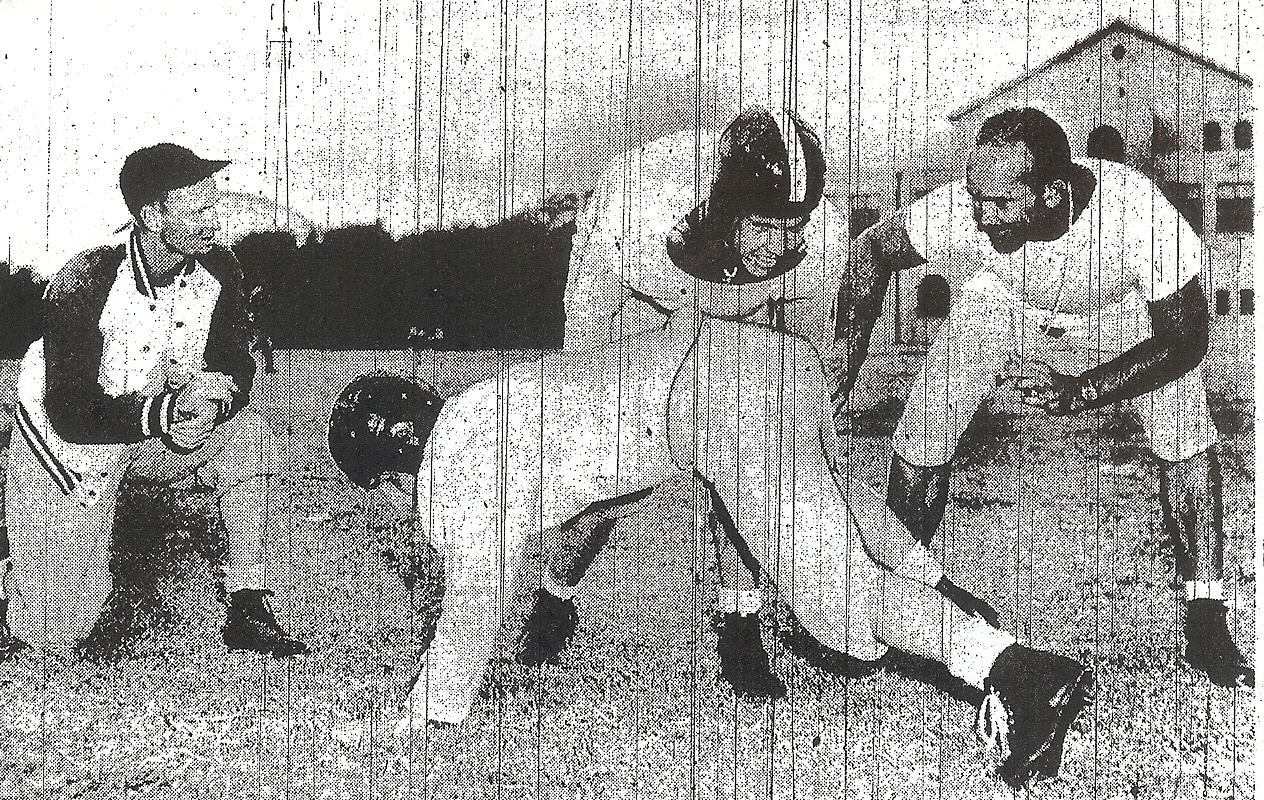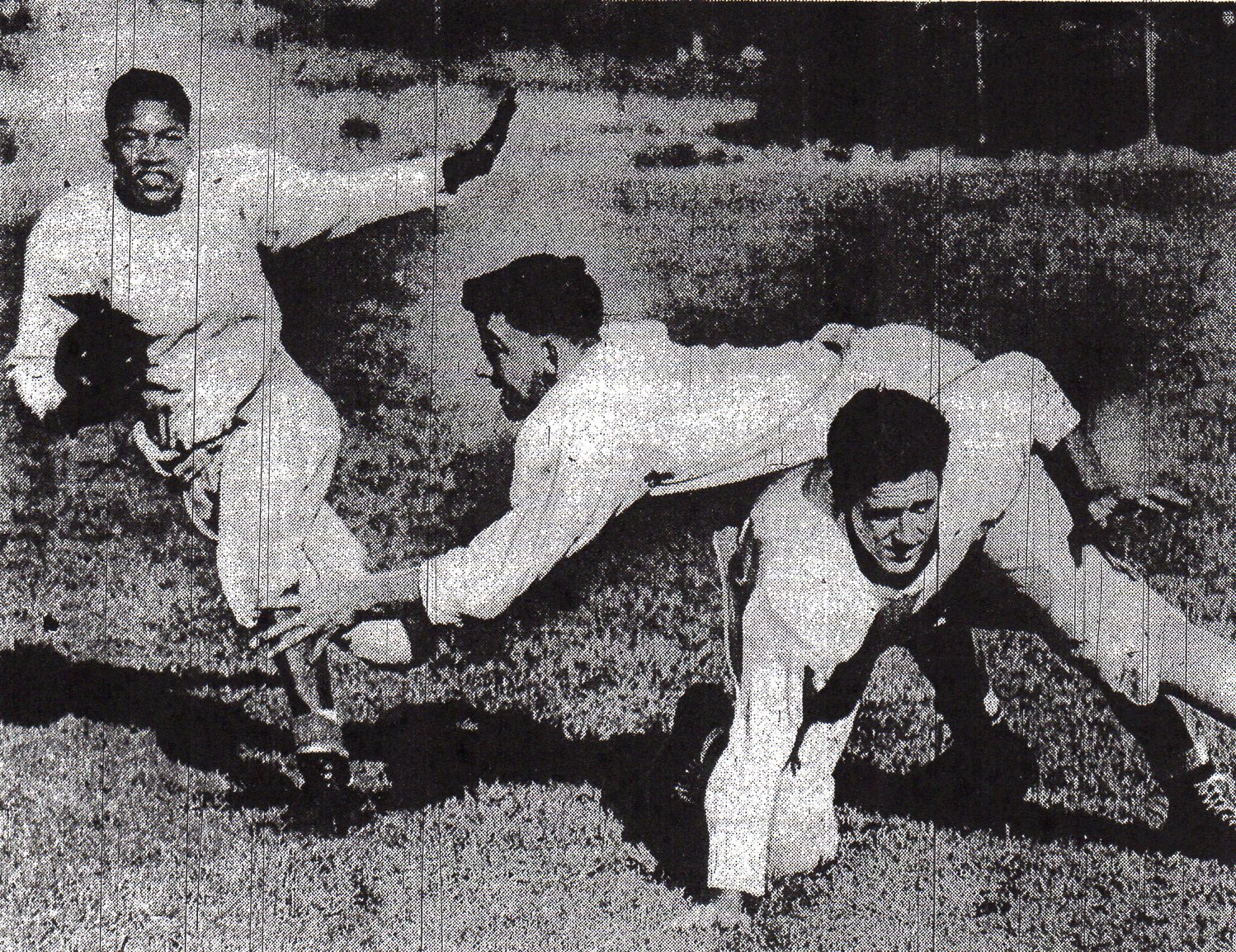1946: BMOCs and King Football
In the era following the World War II, the typical Big Man On Campus fit a profile:
Tall. Good looking. Athletic. Star in sports. Quarterback on the football team. Acted in senior play. Prom king.
San Diego High’s Gerald (Jerry) Dahms checked all boxes in this postwar, San Diego football era. And the era was about high school football, reflecting the optimism and promise embraced by a revitalized country.
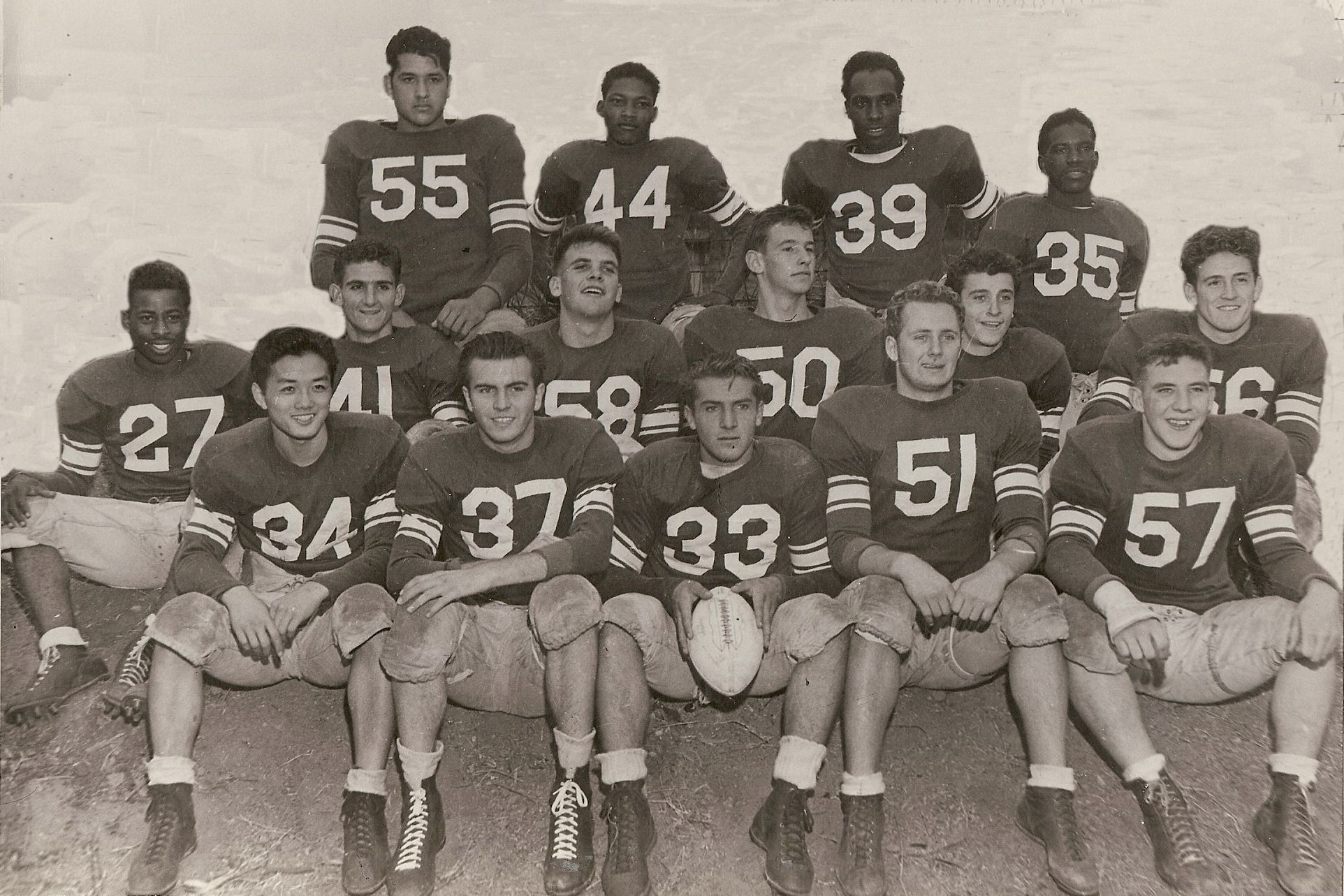
St. Augustine alumnus Gene Earl, the prep writer for The San Diego Union, apparently was caught up in it all when he declared that a crowd of more than 30,000 had packed Balboa Stadium for the opening of the season and the eighth annual football carnival.
The euphoric Earl’s pronouncement strained credibility. Listed seating capacity for Balboa Stadium had been estimated at between 23,000 and 25,000 persons since it was constructed in 1914.
There were seat backs in a few sections, but the concrete bowl essentially had no identifiable seat locations. Turnstiles and actual ticket counters probably didn’t exist.
Just how many could fit into Balboa Stadium will never be known, but Earl’s assumption may not have been that far-fetched. Cue existential factors.
—The only other team spectator choices for sports-starved fans in the county of 362,000 residents were the Pacific Coast League Padres’ baseball, minor league pro football, low-level San Diego State football, Coliseum boxing and wrestling, and minor league hockey.
—Balboa Stadium was located not far from many of the military facilities in San Diego and servicemen frequented high school games in large numbers.
—Several thousand students reveled in the carnival’s football and pageantry and didn’t mind sitting cheek to jowl on a fun-filled Friday night.
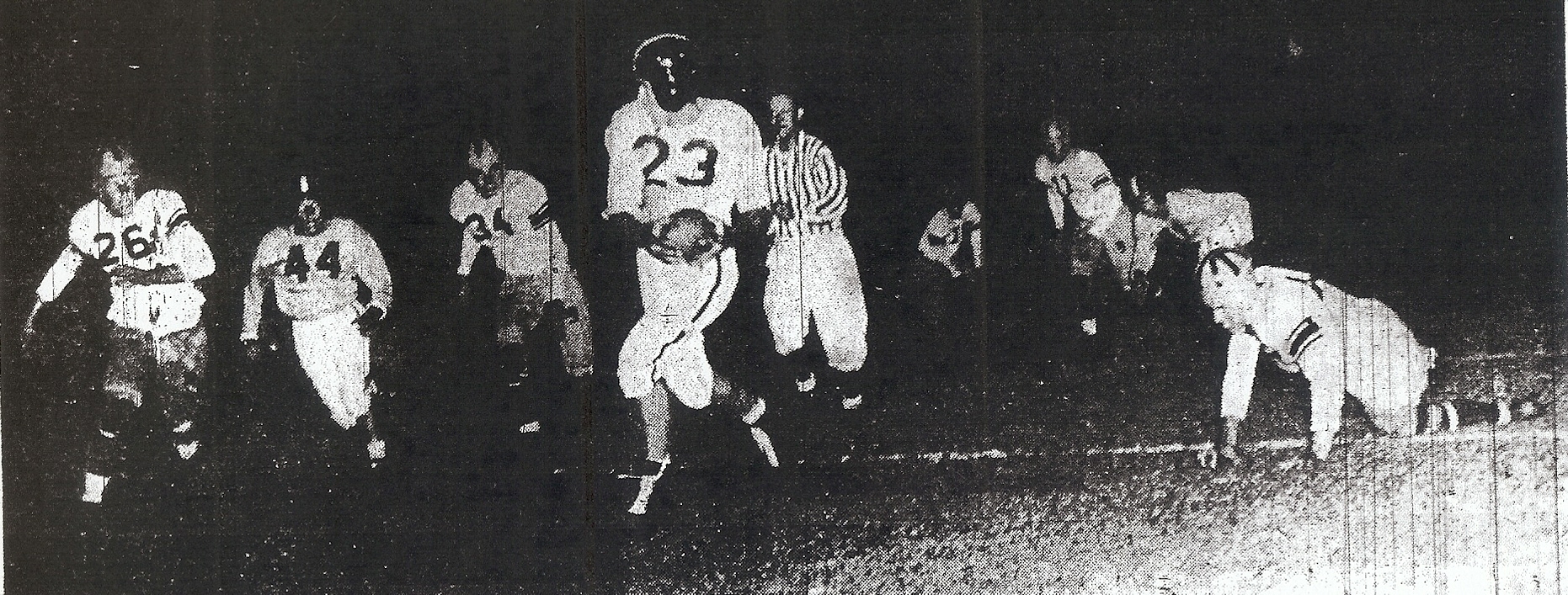
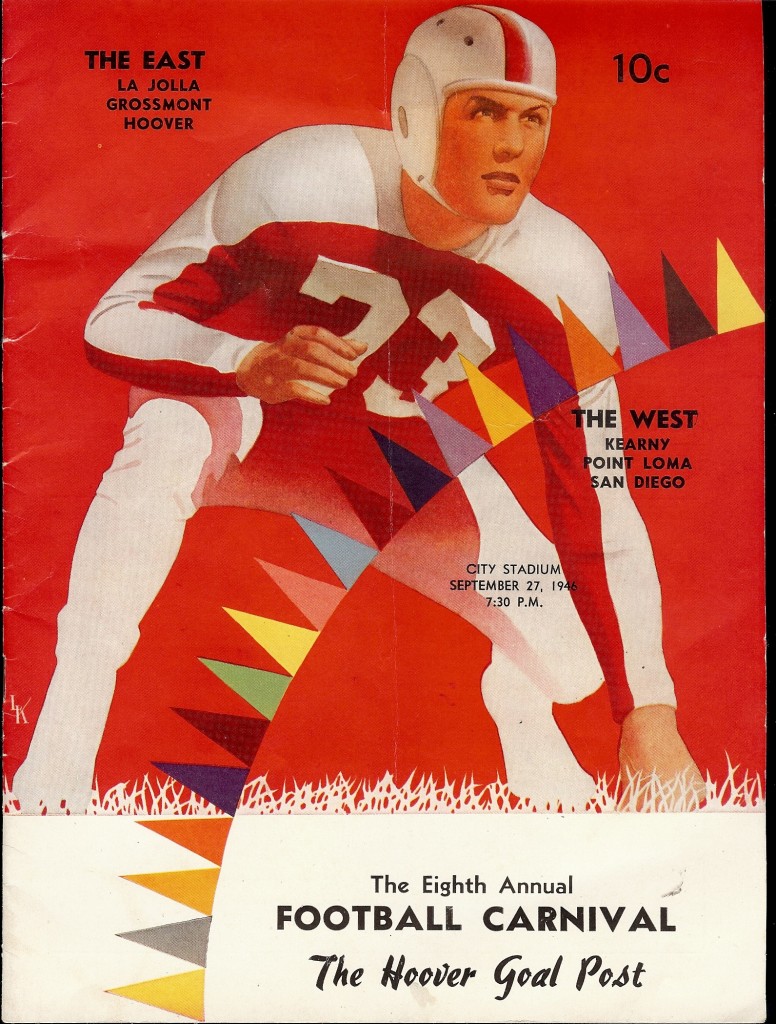
Bailey moved Dahms from tackle to quarterback near the end of Dahms’ junior year when the Cavers turned out for spring practice. “Spring practice in those days was a full-blown deal,” Dahms remembered.
The position change agreed with the 16-year-old senior-to-be who also was a standout in basketball and would play professional baseball.
Dahms took charge in the carnival by completing 6 of 8 passes and connecting with Dick Savoy on a 25-yard touchdown pass and passing to John Holloway for the point after.
The Hillers outscored Hoover 13-0 in the third and final, 15-minute segment. The West, with San Diego, Kearny, and Point Loma, defeated the East’s Grossmont, La Jolla, and Hoover, 19-6.
SUITS COACH TO A T
“Dahms was better than I thought he’d be,” said Bailey, who saw the Memorial Junior high graduate as the ideal leader for his T Formation offense. “He was cool under fire and alert on defense (linebacker).”
Dahms had beaten out Jim Marinos, who also would see action and who was no pedestrian. Marinos started at quarterback for the University of California’s 1951 Rose Bowl team.
“I always had a pretty good arm, but I was surprised, amazed really, when Bailey said to me, ‘You’re going to be our quarterback,'” recalled Dahms in 2012, living in retirement on Point Loma. “When Jimmy was in the game I would move back to left tackle and still call the plays in the huddle.”
The Cavers had gone to the T formation in 1944. Bill Bailey had been a single wing coach at Point Loma High before he replaced the T-oriented Joe Beerkle at San Diego in 1943.
Bailey’s thinking undoubtedly was influenced by the Washington Redskins and quarterback Sammy Baugh, who had trained in San Diego and practiced on the Cavers’ upper field before an Al Bahr Shrine intrasquad game in August, 1944, in Balboa Stadium.
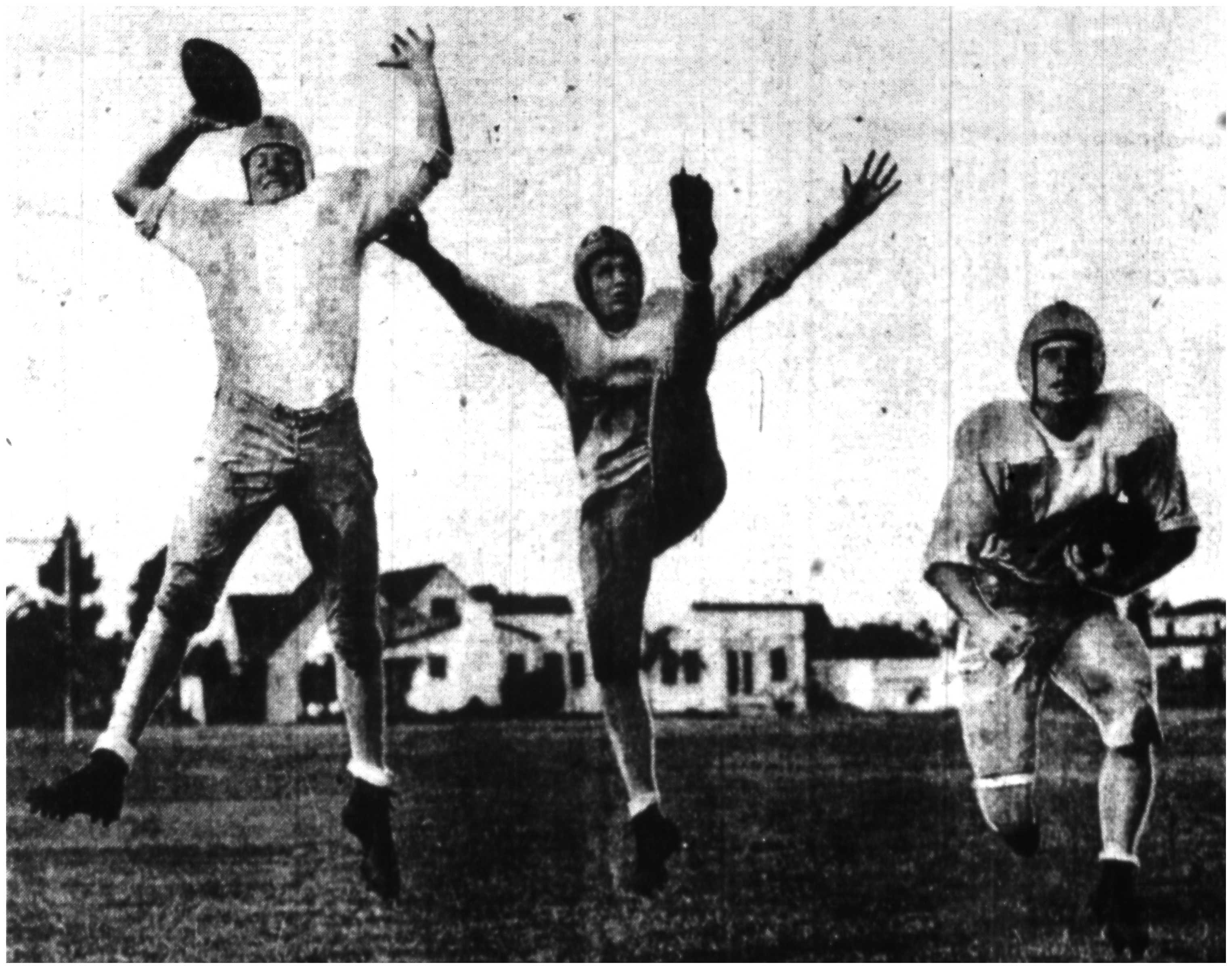
“Coach Bailey met Clark Shaughnessy,” said Dahms, referring to the Hall of Fame coach who served as an advisor to Redskins mentor Dudley DeGroot, who lived in El Cajon when he passed in 1970.
Shaughnessy once was described as a peevish, by-football-possessed, absent-minded professor.
Shaughnessy allegedly was pulled over by police as he was driving in West Los Angeles.
Legend has it that cops in a passing black and white spotted an elderly gentleman diagramming what looked like football plays on the windshield of his car as it weaved in an out of traffic on foggy Olympic Boulevard.
Shaughnessy, who is credited with creating the modern T formation with which his Stanford team upset Nebraska in the 1941 Rose Bowl, graciously spent time with Bailey, imparting his wisdom and knowledge of the formation that changed football forever.
THE CROWDS, THEY FLOCKED!
Fans wanted football, especially San Diego High football.
There were 13,000 in Balboa Stadium for the season opener with Al Pollard and the Loyola Cubs and 20,000 two months later in a rematch in the Southern California playoffs.
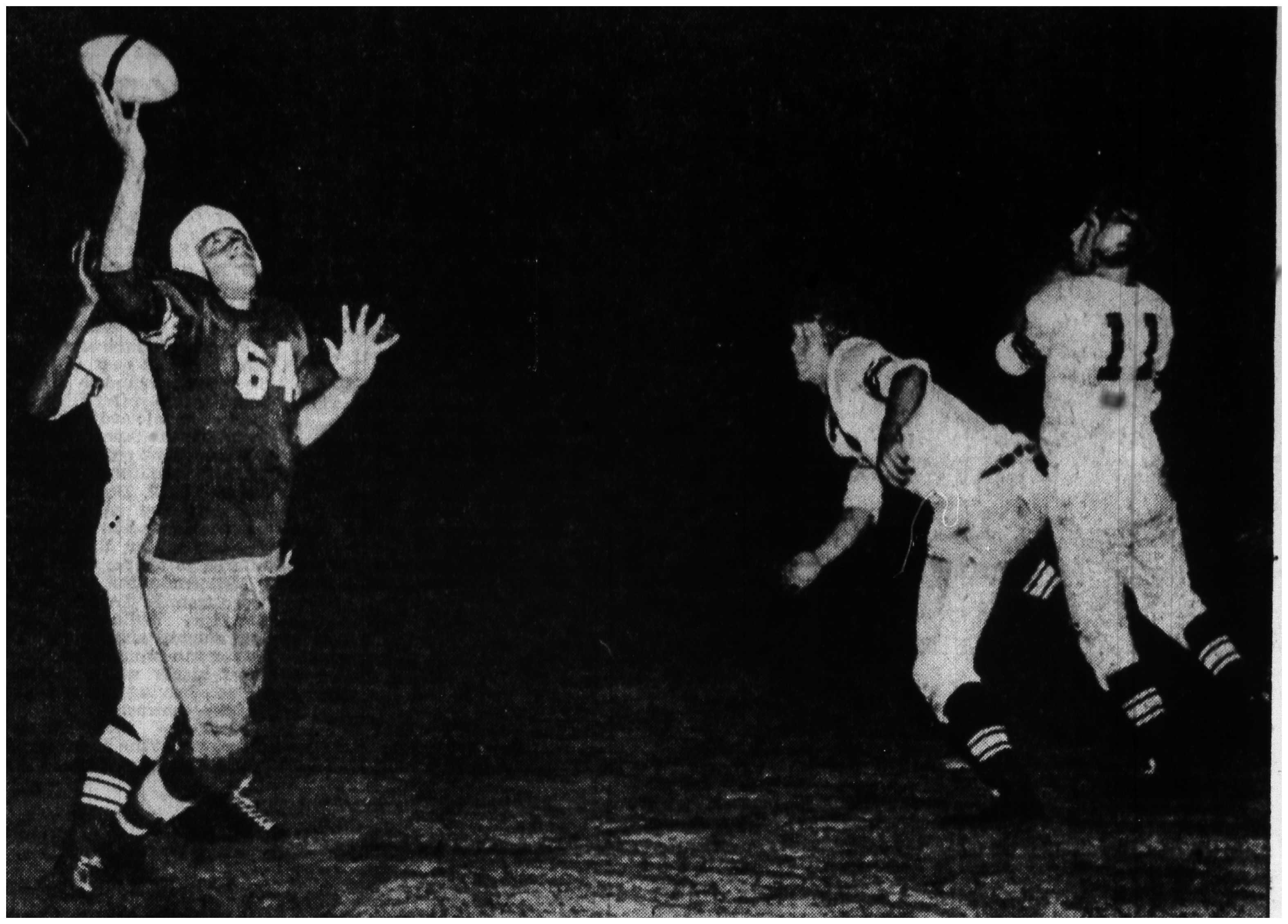
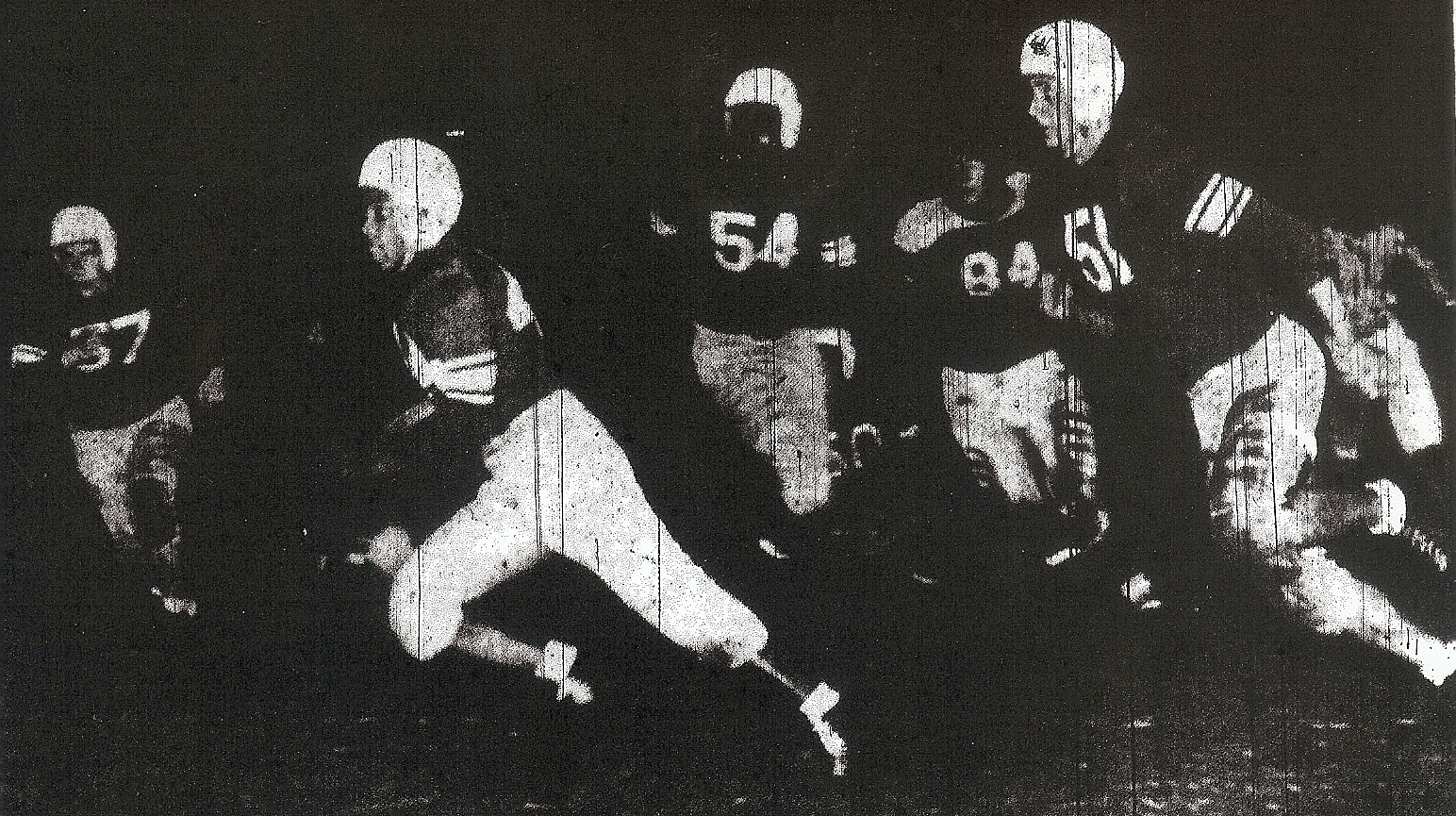
San Diego dominated the postwar alignment, outscoring Compton, Hoover, and Pasadena by a combined score of 107-20. They also defeated Phoenix Union, 14-0, Bakersfield 13-7 and St. Augustine 32-0. It was an impressive run through a strong, intersectional schedule.
BUT NOT ENOUGH
Loyola was the Hillers’ undoing.
The Cubs were led by Al Pollard, the 1945 Southern California player of the year, a fast game-breaker who would play in the NFL and was more than a match for the Cavers.
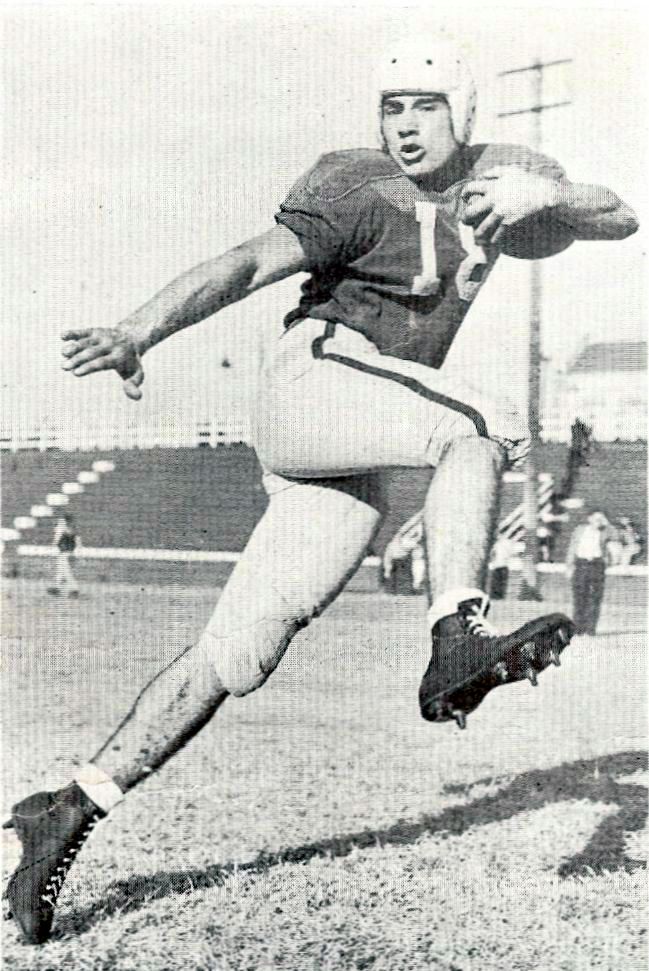
Loyola won the first meeting, 13-12, as Pollard scored touchdowns on runs of 41 and 88 yards and kicked an extra point.
Pollard’s longest run was a crusher for the Cavemen in the third quarter.
Lined up in short punt formation on fourth down at his 12-yard line, Pollard swept his flank and went the distance, then kicked what turned out to be the game-deciding extra point.
A 50-yard pass, Dahms to Sal Macias, put the Cavers on the two-yard line, but the game ended when they were stopped on the next play.
San Diego won a telephonic coin flip in the office of Southern Section commissioner Seth Van Patten to host the rematch in the first round of the Southern Section playoffs. Most of the 20,000 in attendance only heard of Pollard’s exploits. Fog was so thick spectators saw nothing more than sideline stripes.
As the San Diego cheering section was heard through the mist, loudly and demonstratively exhorting its team, “Cavemen, Go!”, the Cavers took an early lead, but Pollard broke a 6-6 tie with a 70-yard touchdown run, then added another 70-yard score as Loyola won, 19-6.
Aside from game officials, the stadium announcer, who followed play from the field, and fans who left their seats and sneaked on to the field, no one had more than an occasional glimpse of what was going on.
Several times play was halted while the gridiron was cleared of fans wandering into the playing area.
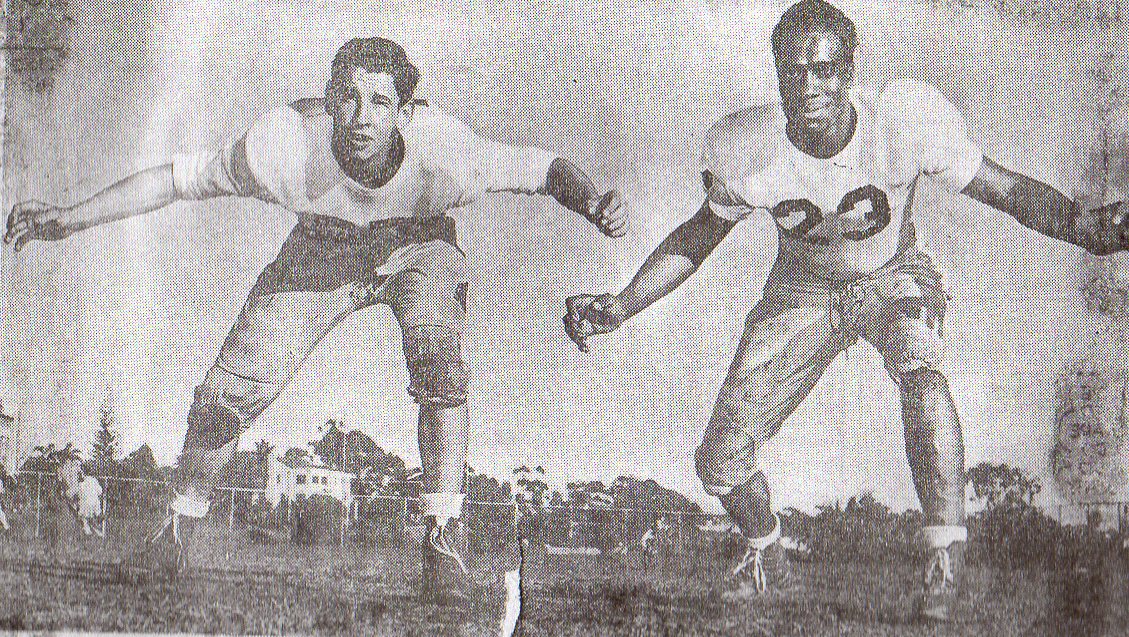
THE WIND BLEW
Point Loma, under first-year coach Don Giddings, stormed through the reunited Metropolitan League with a 6-0-1 record but declined to participate in the Southern California lower division playoffs.
Grossmont, which was 5-1-1 in the league and riding the late-season touchdown thrusts of Art Preston, accepted a bid and visited the 9-0 Central Spartans in El Centro.
Foothillers coach Jack Mashin ruminated about the game for years. His team led, 19-7, in the third quarter, but the winds of fate literally were in play, with gusts to 50 miles an hour.
Two Grossmont punts in the fourth quarter were almost blown back to the line of scrimmage, indirectly leading to two El Centro touchdowns and a 20-19 Spartans victory.
El Centro Central was declared the Lower Division Southern Group champion. Laguna Beach, which defeated Barstow 20-0, was the Central Group champion.
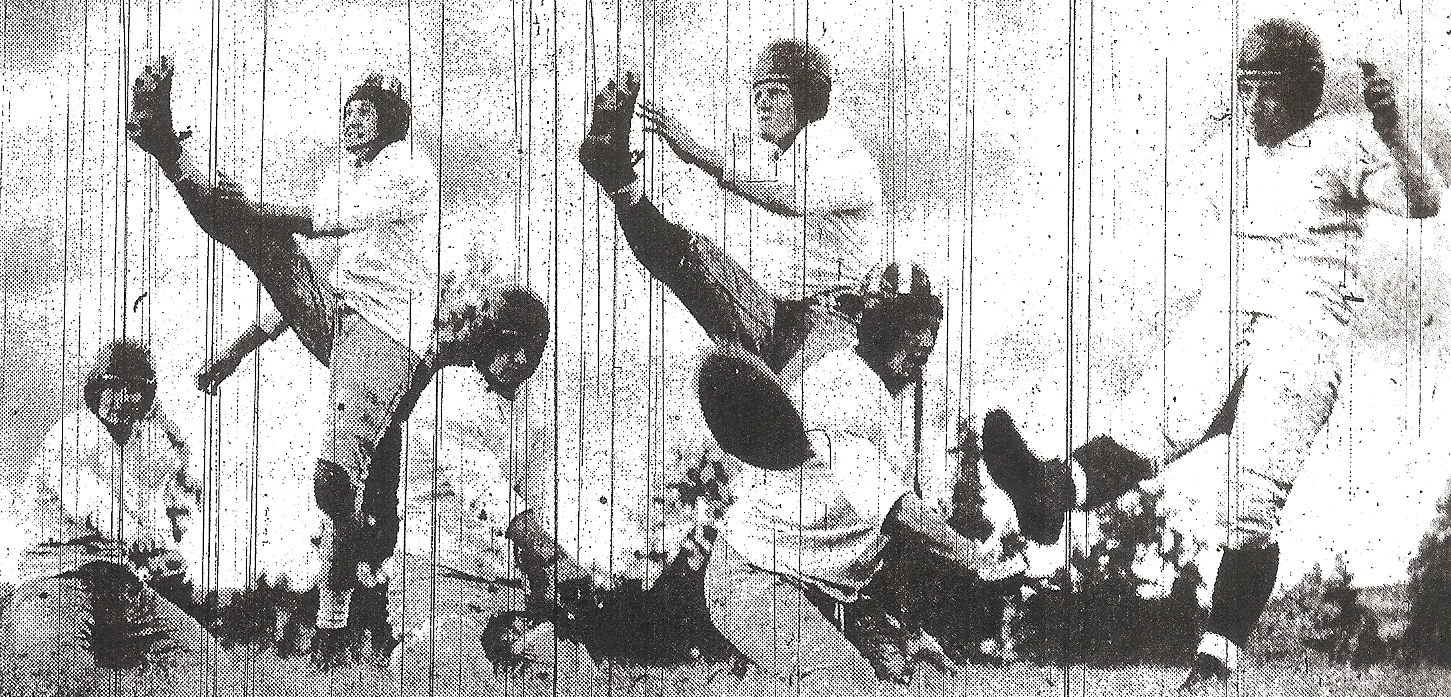
AFTER THE WAR
Grossmont was 6-3-1, representing its most victories since 1937. Jack Mashin, who would conclude a 25-season career after the 1947 campaign, had dominated old rival Escondido.
The Metropolitan League teams met every year from 1920-42, before the wartime hiatus. The series stood at 18-6-4 in the Foothillers’ favor after they scored two touchdowns in the last three minutes to forge a 13-13 tie.
Junior Art Preston scored 15 touchdowns in his last 6 games and ran away with the County scoring title with 120 points
UP IN THE AIR
The Cavers relied not only on Jerry Dahms’ aerial effectiveness but they also took to the air, flying to Phoenix in a precedent-setting trip for a San Diego County team. Hoover followed up later in the season when the Cardinals flew to Las Vegas.
The long rivalry with Phoenix Union, dating to 1923, had seen the evolution of transportation. Previous trips had been made by bus or by rail.
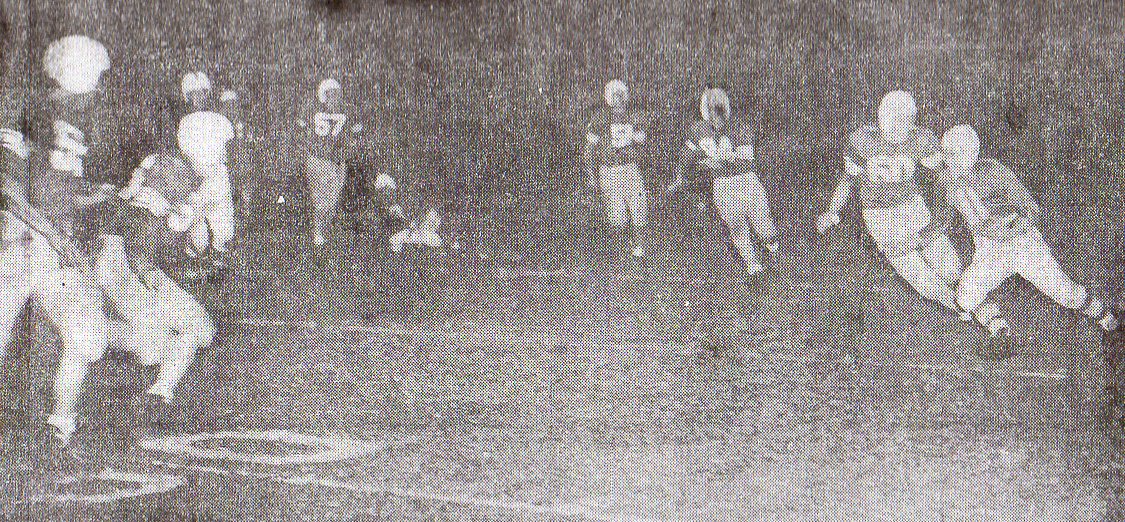
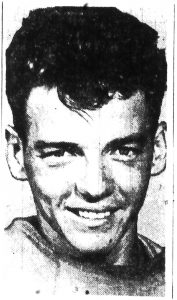
St. Augustine’s lefthanded quarterback, Jesse Thompson, completed 17 passes in a row in a 20-13 loss to Los Angeles Mt. Carmel.
“Jittery Jess”, who led the Saints to a 5-4 record and logged more miles than any local quarterback, was 17 for 23 overall.
The Saints spent many hours on U.S. 101 or 395 traveling to road games in the Los Angeles-based Southland Catholic League.
MAYBE IT WAS THE TRAVEL
By the first week in November, St. Augustine had lost 9 football players.
Discontent was apparent.
Halfback Charlie Jost was upset that he did not start the previous week at home against Santa Monica St. Monica. “I want no prima donnas on my club,” said Fr. William McDermott, the Saints’ coach.
“And there will be no use for Jost to try to get back on the Saints’ team,” McDermott added.

Halfback Dick Virissimo said he was transferring to Point Loma. Jost said he wanted to go to Hoover. Bill Burrows and Steve Cameron went into the Army. Joe LaBringha and Dick Betourne also left school. Ralph McGlinchy quit football, and John McGrath was killed in a cave-in.
The Saints had three games left, versus Long Beach St. Anthony, at Los Angeles Loyola, and at San Bernardino St. Bernadine.
Loyola, after drawing a money-making crowd against San Diego in Balboa Stadium in the first game of the season, volunteered to give up its home field to play the Saints in Balboa Stadium.
McDermott was unable to secure a date and the road game was on, and then was canceled because of “wet grounds” at the Cubs’ Los Angeles venue. It was a peculiar reason to scrub a football game.
SWITCH SIGNALS
Three days later an item appeared in the “Barber Chair” column in The San Diego Union, announcing that Jost “had a change of mind” and apparently was back in McDermott’s good graces.
HONORS
Jesse Thompson made the all-Southern California third team, along with tackle Emmett Hertz of Point Loma and guard Bill Stapp of Coronado. San Diego center Jim Erkenbeck was a second-team selection.
TRUE GRID
The coach at Coronado was the veteran Hal Niedermeyer….a candidate for the Islanders’ squad was Standlee Niemeyer…Grossmont principal Lewis Smith declined an invitation to join the school-strapped Coast League…tackle Bobby Toft, not yet 15 years of age, was a 194-pound starter for Kearny…reporting players were in huge numbers, led by San Diego, which had 135 check out equipment for varsity, JV, and sophomore squads…San Diego was contracted to play eight regular-season games but Fresno High, a strong Central Section entry, pulled out, citing “too strong a schedule”… Cedric Durst, Jr., son of the San Diego Padres’ manager, was a football candidate at Point Loma…Victor Camacho was the fifth member of his family to turn out at Sweetwater… Hal Smith, new coach at Kearny, described his club as “small and green.”… the third-year school posted its best record, 3-5… La Jolla boasted size with John Vierra and Glen Lindblade, each a 280-pounder… center Lou Errecca was back in school at Hoover, after spending 1945 in the Navy… 8,000 persons were on hand the night before the carnival as St. Augustine defeated Coronado 19-13 in the season’s first game… Don Giddings at Point Loma was going against the grain, sticking to the single wing while other Metropolitan teams used the T formation…Bakersfield’s quarterback was future pro football Hall of Famer Frank Gifford…Hoover played nonleague and league games with Pasadena, winning the one that counted in the standings, 6-0… Hoover’s nonleague game against Pasadena Muir attracted 600 chilly fans to the 95,000-seat Rose Bowl… the 14-13 loss didn’t sit well with coach Lee Bogle, especially with the Cardinals being penalized more than 150 yards…his broken right hand in a cast and fighting an upset stomach, San Diego tackle Gene Edwards reportedly was in on almost every play at Compton… a crowd of 2,000 saw title-clinching San Dieguito rout Vista 39-0 before the largest turnout in the Southern Prep League… “We’re as good as Point Loma,” said Sweetwater coach Gordon Cox… the Red Devils dropped a 26-14 decision to the Pointers to finish 2-5-1…the Pointers were 7-0-1…Alhambra defeated Loyola and Al Pollard, 7-6, in the Southern Section championship before 23,285 persons in the Los Angeles Coliseum….tackle Bob Conklin of San Diego and end Bill McColl of Hoover were the only unanimous choices for the all-Coast League team…San Diego landed 10 players on the first and second teams….
PHOTO OPS
